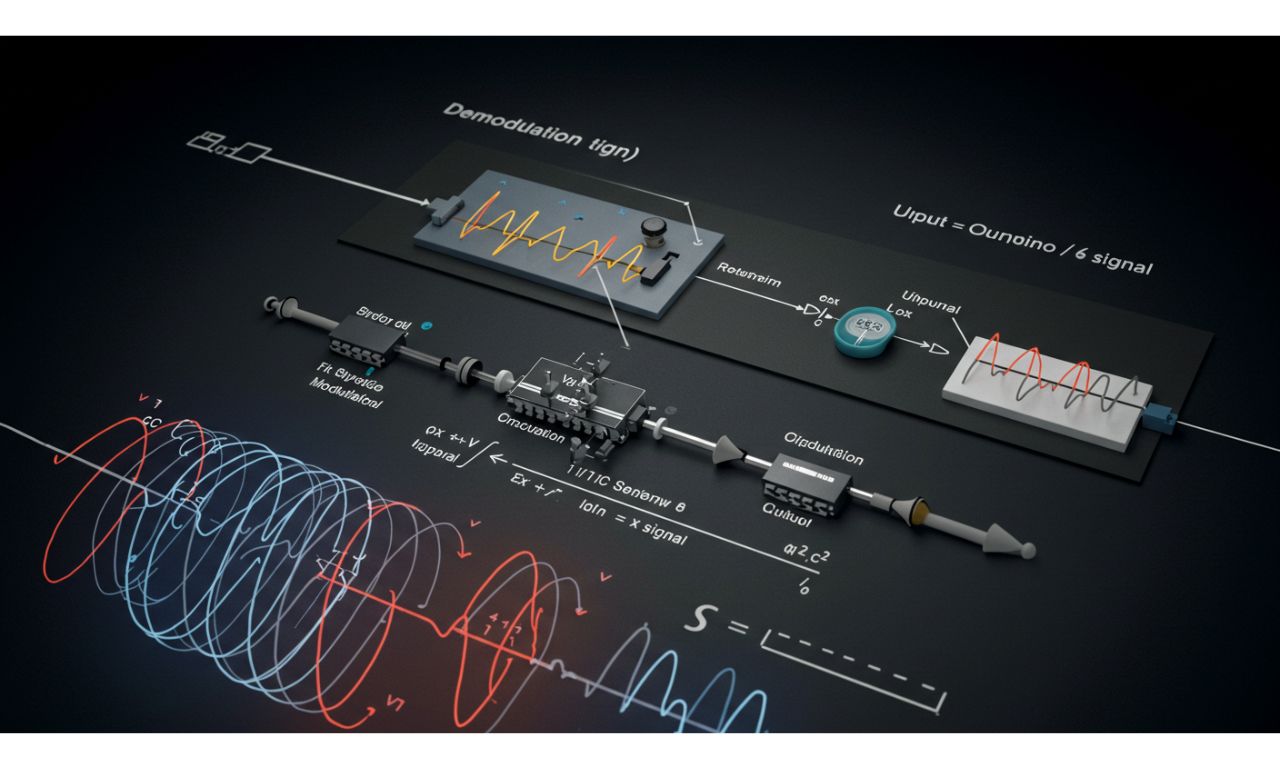In today’s digital communication world, the ability to demodulate signals is at the heart of almost every wireless or wired transmission system. Whether it’s your smartphone, radio, television, or satellite, the process to demodulate signal ensures that transmitted data reaches its destination in a usable form. Understanding how to demodulate a signal helps grasp the fundamentals of modern communication technologies.
What Does It Mean to Demodulate Signal?
To demodulate a signal means to extract the original information-bearing signal from a modulated carrier wave. In simple terms, modulation is when a message is encoded onto a carrier signal for efficient transmission. Demodulation is the reverse process — it retrieves the message from the modulated carrier at the receiving end.
The need to demodulate signal arises because direct transmission of raw signals over long distances is often impractical. Using modulation techniques like amplitude, frequency, or phase modulation makes transmission more efficient and less prone to interference. However, after transmission, devices must demodulate the signal to make the information readable.
Key Methods Used to Demodulate Signal
1. Amplitude Demodulation
One of the simplest ways to demodulate a signal is through amplitude demodulation. This method is commonly used in AM (Amplitude Modulation) radio broadcasting. The receiver detects changes in amplitude and retrieves the audio or data signal.
Techniques Used:
-
Envelope Detection
-
Synchronous Detection
Amplitude demodulation is vital in analog broadcasting and some simple data transmission applications.
2. Frequency Demodulation
Another essential way to demodulate a signal is through frequency demodulation, used mainly in FM (Frequency Modulation) systems. Here, the information is encoded by varying the frequency of the carrier wave.
Common Frequency Demodulation Techniques:
-
Foster-Seeley Discriminator
-
Phase-Locked Loop (PLL)
This method provides high noise immunity, making it suitable for high-fidelity audio broadcasts and certain communication systems.
3. Phase Demodulation
Phase demodulation plays a critical role in digital communication systems. In phase modulation, information is carried by altering the phase of the carrier wave.
Key Methods Include:
-
Coherent Detection
-
Costas Loop
The Importance of Demodulation in Digital Communication
Digital modulation schemes like QAM (Quadrature Amplitude Modulation), PSK (Phase Shift Keying), and FSK (Frequency Shift Keying) require precise demodulation to recover binary data accurately.
Advanced methods to demodulate signals in digital systems often involve:
Matched Filters
Symbol Timing Recovery
Error Detection and Correction
Without accurate demodulation, digital communication systems would suffer from data loss, errors, and reduced performance.
Real-World Applications That Require Demodulation
Radio and Television Broadcasting
Both analog and digital broadcasting systems rely on the ability to demodulate signals for content delivery. From AM/FM radios to satellite TV, demodulation ensures that audio and video reach consumers in high quality.
Wireless Communication (Wi-Fi, 4G, 5G)
Wireless technologies like Wi-Fi, 4G LTE, and 5G networks depend on advanced modulation and demodulation techniques. Devices constantly demodulate signals to maintain data connections and ensure seamless communication.
Satellite Communication
Satellites use high-frequency bands and complex modulation methods. Ground stations must effectively demodulate signal received from space to retrieve valuable information like weather data, GPS signals, and communication relays.
IoT Devices and Sensor Networks
With the Internet of Things (IoT) revolution, billions of connected devices require reliable communication. These devices must demodulate signals from various sources to function effectively in networks.
Challenges in Signal Demodulation
Noise and Interference
A major hurdle in the effort to demodulate a signal is dealing with noise and interference. Advanced filtering, error correction, and adaptive techniques are used to ensure signal integrity even in noisy environments.
Multipath Fading and Doppler Shift
In wireless systems, factors like multipath fading and Doppler effects can distort the signal. Adaptive demodulation techniques help demodulate signal correctly despite these challenges.
Synchronization Issues
For accurate demodulation, synchronization between transmitter and receiver is crucial. Techniques like clock recovery and carrier synchronization are employed to improve the ability to demodulate signals effectively.
Future of Signal Demodulation Technologies
With the rise of AI and machine learning, new adaptive algorithms are being developed to demodulate signals more effectively in dynamic environments. Software-defined radios (SDRs) allow flexible implementation of demodulation techniques, making communication systems more versatile.
Conclusion
Understanding how to demodulate signal — and the techniques involved — helps appreciate the complexity behind everyday technologies we often take for granted. As communication needs evolve, demodulation techniques will continue to advance, shaping the future of global connectivity
